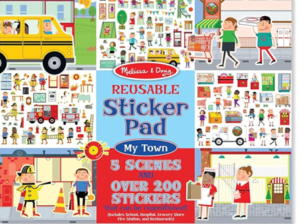Here at Therapy at Play, Inc., we love functional, play-based therapy! Toys are lovely developmental tools you can use to address various fundamental skills. This makes choosing toys very important, especially if you already have some lying around your house! Below are some excellent holiday toy options for 2023 to choose from.
12 Holiday Toy Ideas
Here are some holiday toy ideas to help you choose the best Christmas presents for your children:
Melissa and Doug: Pretend Play Toys
Many of the Melissa and Doug Toys are great for pretend play, whether the child is playing alone or engaging in cooperative play with peers. This is an excellent option for your holiday toy gift this upcoming holiday 2023 season. Sometimes, no sound or music comes from these toys, meaning the child will occupy their playtime with their own imaginary sounds, words, and imagination!
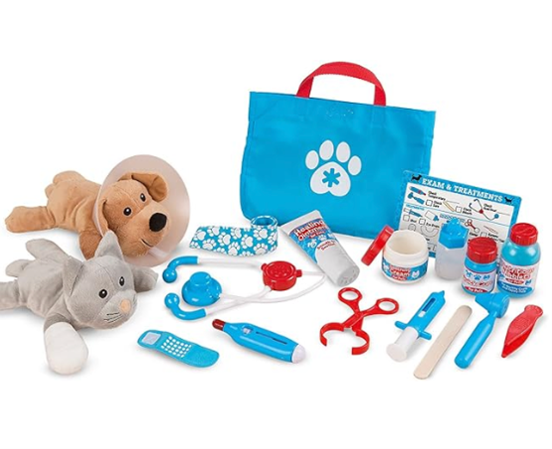
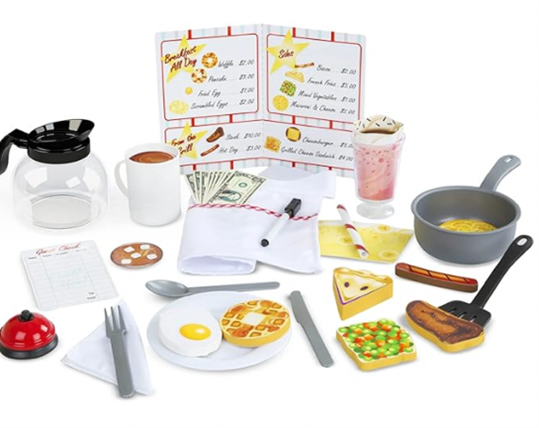
Melissa and Doug: Reusable Sticker Pad
This reusable sticker pad can be used to help expand both expressive and receptive language skills. Using multiple settings in the sticker pad, one can work on categories to help build your child’s vocabulary and categorization skills (“Put the plates in the kitchen, put the toilet in the bathroom, where does the couch go?”) one to two to three-step directions (“Put the plates in the kitchen AND put the toilet in the bathroom), labeling nouns in multiple contexts, expanding utterances using the one-up rule (ex. if your child says plate, you say round plate or yellow plate”) and commenting on the many nouns and action stickers in the book.
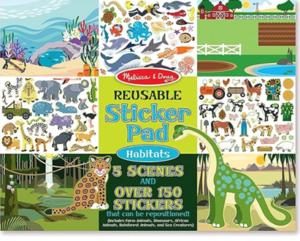
Windup Toys
Windup toys that move when you wind up their keys are great for building your child’s expressive language. It is a great way to initiate communication by highlighting the strategy of communication temptations. When parents and clinicians use toys that are hard to operate, it creates an opportunity for the child to communicate with us via gestures, sounds, and words. Words and phrases that can be used at a high frequency when playing with windup toys: “Go, my turn, help me, more, all done, wind it up, hop, fast, wheels” and any exclamations such as “woah, yay, wow, uh-oh, oh no.”
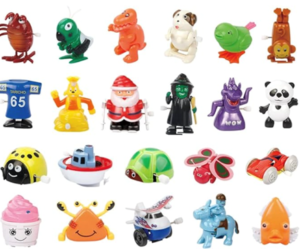
Little People Pretend Play Sets
Pretend play is a great way to help expand and build on your child’s expressive and receptive language skills. These sets allow for imaginative play that can be both fun and educational. Just a few things one can target during pretend play are, both expressively and receptively, spatial concepts (on top, under, behind, in front, etc.), expanding utterances, labeling nouns, using pronouns (“She is swinging, he is sleeping, they are climbing up the tree”), answering who/what/where questions (where is the boy, who is sleeping, what is she doing?”), taking turns, and using novel language to increase vocabulary.
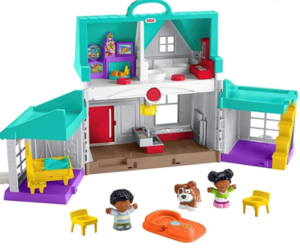
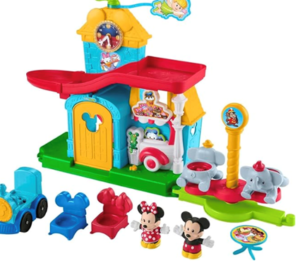
Pretend Kitchen Play
Kids love imitating their parents, which is why your child might be interested in kitchen tools and utensils, which is a great thing. Modeling, both verbally and gesturally, is one of the best ways to help expand your child’s language, and what better way to do it than to play with a toy that imitates a part of your daily routine? Pretend play with food can be very beneficial in helping increase the child’s vocabulary via commenting and naming the items (“juice, yummy juice, juice is in the cup”), repetition of language, giving choices (“Do you want the apple or the banana?”), and narration (“Good job pouring the juice into the cup, you’re drinking the juice, I have an apple on my plate”).
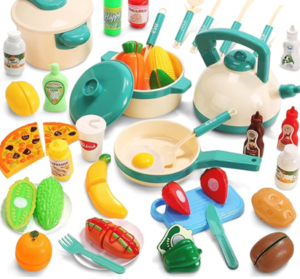
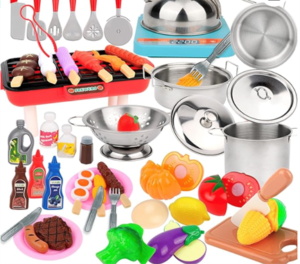
Headbanz Game
This is a perfect tool for a fun speech session at home and makes for a fun family game you can play with your kids. You can ask yes and no questions to guess what object is on the card and specific open-ended questions. Headbandz helps build your child’s vocabulary, highlights descriptive language, and encourages them to ask and answer questions—another excellent option for your holiday toy gift in 2023.
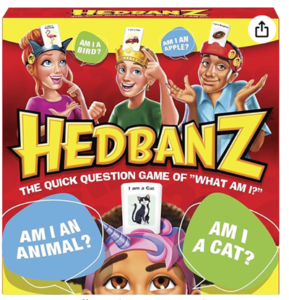
Pop-up Super Mario
This great and simple game introduces children to turn-taking and the concepts of winning/losing/being a good sport. You can work on reciprocal play, modeling my turn/your turn to highlight pronouns and common language, labeling colors, using adjectives and pre-noun elaboration to describe items, fine motor skills, and waiting your turn. It is also the perfect first game to introduce basic social concepts such as being a good sport and friendly competition.
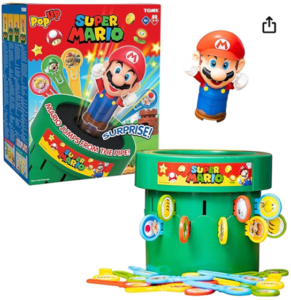
Play Dough with Tools
Play Dough is a great tool to help facilitate language growth as well as varying stages of play. You can incorporate imaginative, reciprocal, parallel, and joint space. You can use communication temptations to help target requests such as “open please, playdough out, help me roll,” say it again and again by labeling playdough colors, shapes, and items that the playdough has been shaped into.
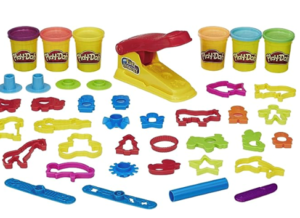
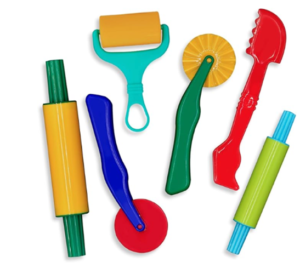
Stack and Sort Boxes
This toy introduces essential reciprocal play, spatial and temporal concepts, categories/sorting, and fine motor skills. You can highlight the different colors, the names of the animals, the sounds that the animals make, the location of where the animal lives/goes, and the sizes of the different boxes. Using the language strategy, you can use commenting to label what the child is doing (“the green box goes on top, the pig goes in, let’s stack, crash, the boxes fell, the pig is climbing up up up”) to help with expressive and receptive language growth.
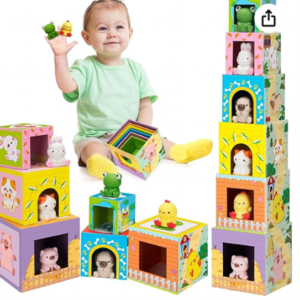
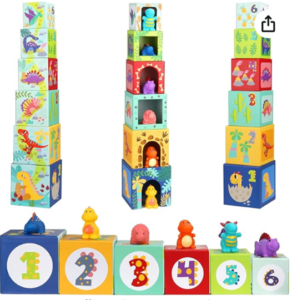
Car tracks
This toy is a fun way to work on joint play, fine motor skills, attending an activity for an extended period, using communication temptations to help illicit language, and using your imagination to build different tracks to race the cars around! For younger children, some target words during this activity are car, go, stop, beep beep, up, down, turn, uh-oh, in, open, close, and crash. You can also use this activity to work on 1 to 2-step directions (put the jeep in the tunnel and the dinosaur under the bridge), spatial and temporal concepts, taking turns, and imaginative play packed with vocabulary.
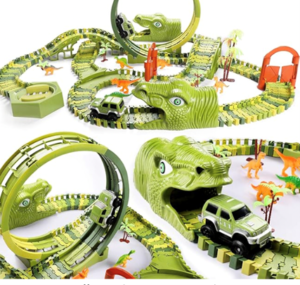
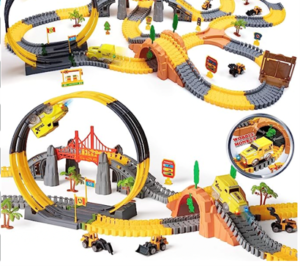
If You Give a Mouse a Cookie a series: 9-book set
This series is an excellent introduction to sequencing, answering basic wh-questions (who, what, where), identifying characters and varying settings, labeling actions + adjectives, and attending a structured activity for >5 minutes. Books are also a great way to model age-appropriate grammar, from pronouns, plurals, conjunctions, negatives, and past and present verbs. Reading a story multiple times can help with vocabulary growth; children enjoy repetition, which allows them to learn language. Books can also help develop deductive reasoning; you can ask your child “why” questions about the story and the characters.
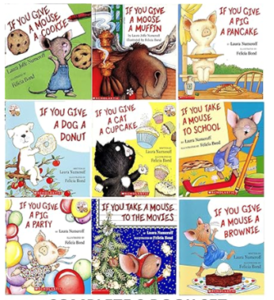
Puppets
Puppets and dolls are a great way to help illicit language. You can work on everyday routines via physical and verbal modeling. When targeting initial sounds (such as p,b,d,m,n,h,w), you can pick words around the house and model them yourself using the puppet. The exaggerated features and familiar characters are appealing to children. This helps kids motivation to play and, in turn, imitate words and gestures. Some daily routines to involve the puppet or dolls are bath time, brushing teeth, getting ready for daycare/school, mealtime, toilet time, and clean up.
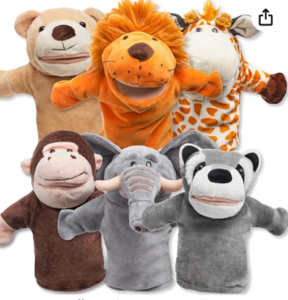
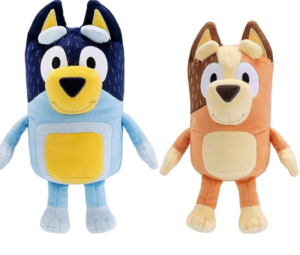
We hope this holiday toy 2023 gift guide will help you choose exciting and productive toys for your child this season!


